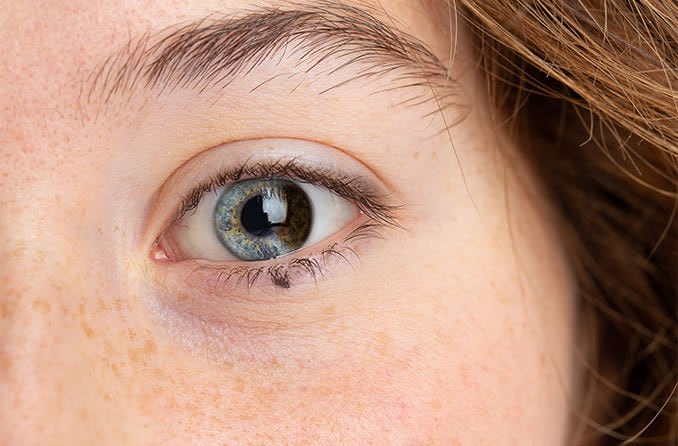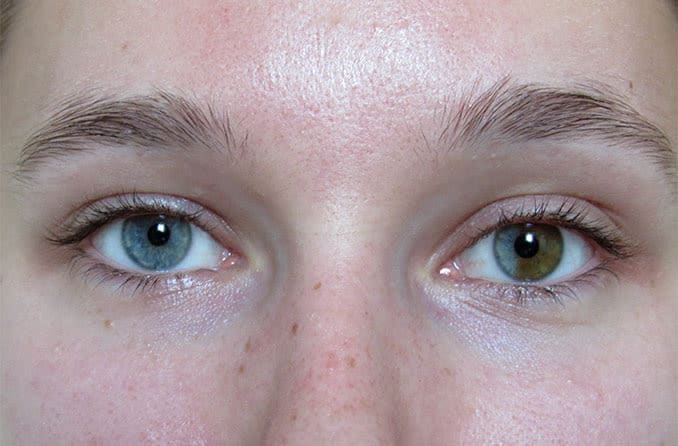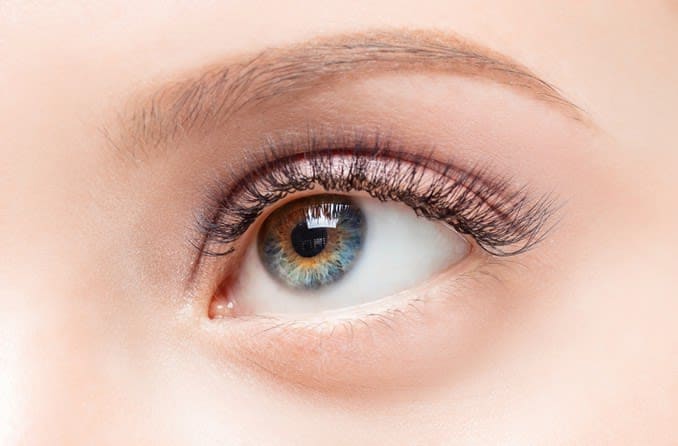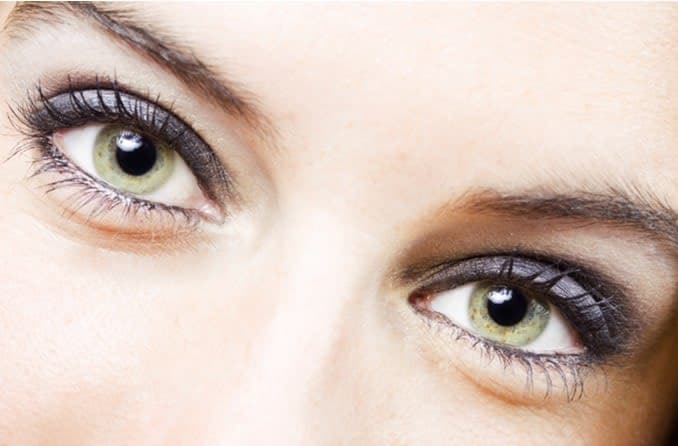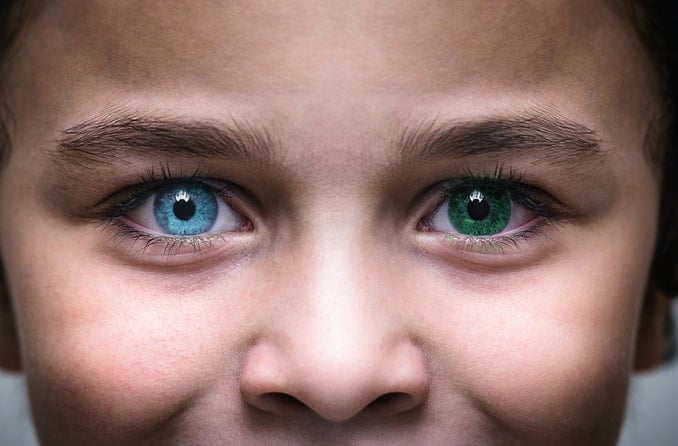What is heterochromia?
Heterochromia is when someone has more than one eye color. In many cases, this means each eye is a different color. For example, one eye is brown and the other eye is green. It can also mean there are at least two different colors in parts of one eye or both eyes.
If you’ve ever asked, “What is it called when you have different-colored eyes?,” the answer is heterochromia.
Heterochromia is a rare condition that affects the iris, the colored part of the eye. A pigment within the iris called melanin gives eyes their distinct color.
SEE RELATED: The mystery surrounding hazel eyes
What causes heterochromia?
A genetic mutation is believed to cause most congenital forms of heterochromia. The mutation is usually benign, meaning that it doesn’t relate to an underlying disease or illness and won’t cause any harm.
This random genetic “surprise” affects the melanin levels in different parts of the iris(es). Of the common eye colors, brown eyes have the most melanin and blue eyes have the least.
Animals can have heterochromia, too. At some point, you’ve probably noticed a Siberian husky, Australian shepherd or border collie with two different-colored eyes. Along with other domestic animals, these dogs experience a similar genetic phenomenon to humans.
Heterochromia is usually harmless when present from birth (congenital heterochromia). But it can also point to an underlying condition.
These conditions include:
- Horner’s syndrome
- Waardenburg syndrome
- Sturge-Weber syndrome
- Piebaldism
- Bourneville disease (tuberous sclerosis)
- Hirschsprung disease
- Bloch-Sulzberger syndrome
Less commonly, heterochromia can occur later in life due to disease, injury or the use of certain medications. This is called acquired heterochromia.
When heterochromia is acquired, it may be the result of:
- Eye injury
- Eye surgery
- Uveitis
- Glaucoma
- Glaucoma medication
- Diabetes
- Eye tumors (benign or cancerous)
- Central retinal vein occlusion (CRVO)
LEARN MORE about the causes of heterochromia
Types and symptoms of heterochromia
There are three types of heterochromia: complete heterochromia, central heterochromia and sectoral heterochromia. Each type has its own unique visual traits:
- Complete heterochromia – Two “mismatched” eyes of completely different colors.
- Central heterochromia – Multicolored eyes that start with one color near the pupil. The iris then shifts to a different color toward the edge. Central heterochromia usually affects both eyes.
- Sectoral heterochromia – Two-colored eyes that take on more of a “slice” or “wedge” pattern on each affected eye. Also called partial heterochromia, it represents the type with the most variety. The secondary color can look like a thin slice of color in one eye and take up two-thirds of the iris in another eye.
A condition called anisocoria can easily be confused with heterochromia, which was often the case with David Bowie. Anisocoria gives the appearance of two different eye colors. In reality, the variation only relates to unequal pupil size — which can cause one eye to look darker than the other — not the actual eye color.
Heterochromia iridum and heterochromia iridis
When someone’s eyes have any form of multiple colors, they probably have heterochromia iridum or heterochromia iridis. Either name can be used to describe the condition mentioned above (eye-related heterochromia), but the terms are slightly different:
- Heterochromia iridum means each eye is a different color. This is another name for complete heterochromia.
- Heterochromia iridis means there are multiple colors on the same iris. This usually refers to sectoral heterochromia.
Different forms of heterochromia can affect skin and hair, so attaching iridum or iridis says that only the eyes are affected.
Heterochromia diagnosis
Since most lifelong cases of heterochromia aren’t harmful, they often won’t need to be diagnosed by a doctor.
When a baby is born with heterochromia, their doctor may recommend having an ophthalmologist (medical eye doctor) look at their eyes. This is a normal process and not a cause for concern. It’s only used to rule out any rare conditions.
When heterochromia occurs or changes later in life, an eye doctor will need to perform a comprehensive eye exam.
Heterochromia treatment
Heterochromia is often a harmless genetic trait. In these cases, it doesn’t need to be treated.
If a medical professional has determined that your heterochromia is due to an underlying condition or illness, treatment may be needed. Speak to your doctor about any questions you may have regarding developing a treatment plan.
If having different-colored eyes or different colors within each eye bothers you, consider trying colored contacts. However, we think that having different colors in your eyes makes you unique! In fact, many celebrities have heterochromia.
Heterochromia FAQs
Q: Is having heterochromia, or different-colored eyes, a bad thing?
A: Not usually, but it depends on the cause. Most cases of congenital heterochromia are harmless and don't reflect an underlying illness. However, acquired heterochromia may be caused by certain glaucoma eye drops, eye injuries or diseases, or other problems. If you notice a rapid change in your eye color, see an eye doctor.
Q: Is heterochromia more common in males or females?
A: There's no clear evidence that heterochromia is more common in males or females. One older study suggested it was more common in females, but the study only looked at people in one city.
Q: What’s the difference between central heterochromia and hazel eyes?
A: An eye with central heterochromia has one distinct color around the pupil and a different color toward the outer edge of the iris. Hazel eyes are a mixture of different colors throughout the entire surface of the iris. For example, central heterochromia looks more like a target with multiple rings of color and hazel looks more like confetti.
STILL HAVE QUESTIONS? Read more of our heterochromia FAQ



